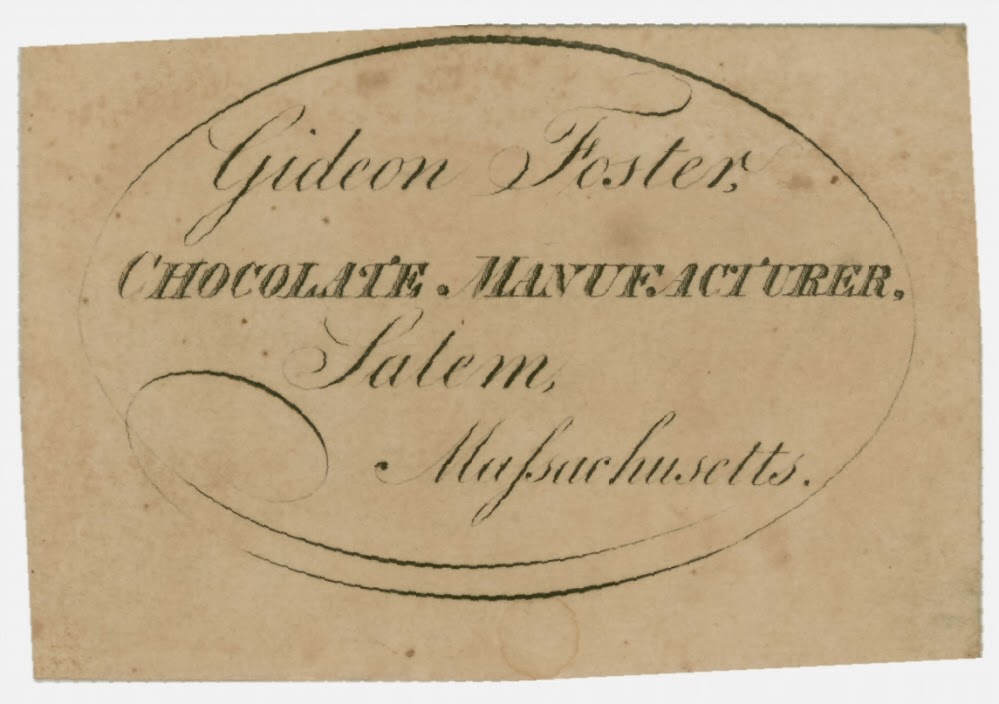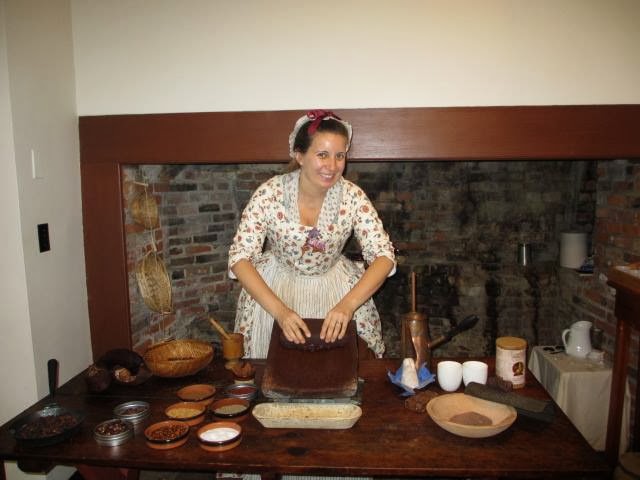Today, Americans often consume chocolate as a snack in solid form, molded into a bar or some bite-sized morsel. But it the eighteenth and early nineteenth centuries, people usually took their chocolate as a hot drink, often for breakfast. So popular had chocolate become, that by 1785 Thomas Jefferson could write, “the superiority of chocolate, both for health and nourishment, will soon give it the same preference over tea and coffee in America which it has in Spain.”
After 1800, chocolate’s popularity soared. Chocolate mills flourished in all the major American cities, and its reach crept down the social ladder. For one thing, it was relatively inexpensive. In 1815, the U.S. Navy sold it to sailors for 37 ½ cent per pound.1 Two years before, USS Constitution received sugar priced at between 20 and 28 cents per pound. Tea, on the other hand, sold for between $1.67 and $1.80 per pound.2

For most people, sailors included, sugar came in large cones or loaves. Wrapped in coarse blue paper to protect it in shipping and on the shop shelf, the consumer had to first dislodge a lump and then either dissolve it in a hot liquid or pulverize it.While on the subject of chocolate, we must not forget sugar. Visit many house museums, and the docents will tell you that sugar was a valuable commodity in the period, kept away from thieving fingers under lock and key, sometimes in specially designed sugar chests. The truth is, sugar was also inexpensive and ubiquitous. Historians tell us that per capita consumption of sugar in Britain rose from about 4 pounds per year in 1704 to about 18 pounds in 1800, fueled by an ever increasing cultural sweet tooth and the ruthlessly efficient system of chattel slavery in the sugar islands of the West Indies. The U.S. Navy offered sugar to sailors for 28 cents per pound. Even cheaper, less-refined sugar could be had for 18 cents per pound.3

“To prepare it with either milk or water, in which, when boiling hot, you first dissolve it, then, with a box-mill, with a long handle, you mill it to froth in the pot in which it is making, and pour it afterwards in cups to drink.”
Sailors probably did not have box mills or chocolate pots at their disposal, but a tin pot and a wooden spoon would probably do the trick. Lydia Maria Child, in The American Frugal Housewife (1833), suggests that nutmeg improves the taste of chocolate, and since this was a common spice, seamen could have grated it into their cups. However they took it, we can be sure it provided welcomed nourishment on a frosty day at sea.
Try it for yourself with a downloadable recipe for 1812 hot chocolate!
1 “Prices of private Stores to be charged at,” Fourth Auditor Settled Accounts, Alphabetical Series, RG 217, Box 908, National Archives and Records Administration.
2 Voucher to Stephen Cushing, 28 Nov. 1813, and voucher to S.A.& W. Shed, Sept. 1813, in Fourth Auditor Settled Accounts, Alphabetical Series, RG 217, Box 39, National Archives and Records Administration.
3 Ibid.
4 Edward Cutbush, Observations on the Means of Preserving the Health of Soldiers and Sailors (Philadelphia: Fry and Krammer, 1808), 303.
The Author(s)
Matthew Brenckle
Research Historian, USS Constitution Museum
Matthew Brenckle was the Research Historian at the USS Constitution Museum from 2006 to 2016.